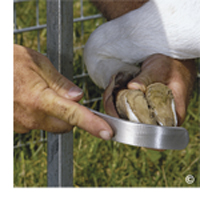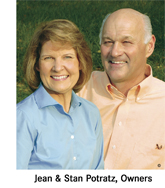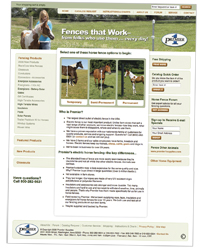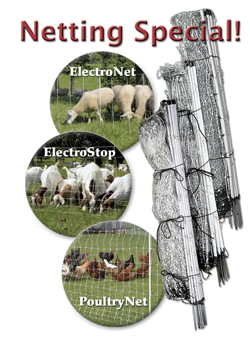Message from the Owner
Save Extra Tax $ in April, 2009 via Capital Expenses in 2008 on your Farm or RanchAccording to my tax accountant 2008 is a special year for expensing depreciable expenses from your livestock operation. Why? Because the 2008 Economic Stimulus Act allows farm and business owners to deduct 100% (in some cases 50%) of the cost of capital outlays for items with a depreciation period of 20 years or less. It's important to appreciate that this applies primarily to 2008 and much less to 2009 and the future. Now I'm as troubled as many of you may be that government "gifts" like this increase our national debt. But, given that it's the law, we plan to take advantage of it as Premier's expanded livestock operation needs more permanent fences, handling yards and machinery. All are capital expenses that can, if purchased in 2008, be expensed in full and will thereby reduce our taxable income on April, 2009's tax return. I'm also told that 50% of the cost of breeding animals purchased in 2008 that have not been bred is also deductible from your taxable income. This is an serious potential benefit-more $$ in some cases than the 2008 tax rebates. Check with your own tax specialist for details and to ensure that your operation qualifies. The Livestock Operation "Models" that will SurviveThere is no doubt that high prices for fuel, grain, land and hay are forcing dramatic changes. Which production systems will survive and, in some cases, thrive? The short answer is the small and the large. The model least likely to survive is the "in-between" size of livestock operation. Why? Because the labor costs per lb. of meat or milk produced by larger operations are, because of their economics of scale and high investment in buildings and equipment, lower than the small or in-between. However those large operations that must haul feed and/or animals long distances may still be in trouble due to the high cost of diesel. Those that produce their feed close to their animals (and there is no animal closer to its food source than a grazing animal) will survive and, after a year or two of adjustments, probably do very well. On the other hand, small livestock operations will thrive because their labor isn't a cash cost to them. Most have outside income (e.g. a day job). They care for their land and animals because that's what they like to do. (I fit into this group.) To them income from the sale of animals, milk or fiber is supplemental, not primary, income. This is a critical advantage over both large and "in-between" operations. Small operations can maximize this advantage by investing in labor-saving equipment and facilities to enable them to produce the maximum $ of meat, milk or fiber in their weekend and evening hours. by Stan Potratz What's New
Now Live! - Premier's NEW Horse Fence Websitewww.horsefencesthatwork.com
You can still visit www.premier1supplies.com for all species and products. Special Price from Premier!
Buy 2 or more nets and receive $5 off per roll(Remember: FREE SHIPPING on qualified website orders) Order soon! Offer expires
|
 Premier's photo using a Premier Hoof Rasp which is immensely popular for putting the "finishing touches" on goat hooves. |
by Dr. Tatiana Luisa Stanton
April 1999, Cornell University, Ithaca, NY 14853
Website http://www.ansci.cornell.edu/4H/goats
Wild goats travel long distances looking for food and often play on rough rocks and hard ground. All this activity helps keep their hooves somewhat trimmed and cared for. If their hooves do get too long, the tips usually break off naturally. This makes the goat pretty lame for a few days. Too bad for the goat if it encounters a wolf during these lame days (Bye, bye goat!). Tame or domesticated goats count on you to trim their hooves regularly.
Otherwise, their hooves will get too long and they may even become lame from the pain. This may cause them to go off feed and to stop exercising. A wether needs to eat and play a lot to develop a good meat carcass. One of your most important duties as your wether's owner is to regularly trim his hooves. Be warned, the first time you trim his hooves, you will probably get exhausted and it may even seem a little scary. But the more practice you get, the easier it becomes. Plan on trimming your wether's hooves about every 6 weeks. Remember, the longer you let your goat's hooves get, the harder the job will be.
Most people use foot rot shears or hoof trimmers to trim goat hooves. You can buy them through livestock supply catalogs and at some feed stores. Pruning shears also work. Pocket knives are pretty dangerous to use since your goat may jump around and you can easily cut yourself. Some people like to use hoof nippers to cut off the tip of the hoof or rasps to file it down. It is generally best for the beginner to invest in shears or trimmers. Even these are very sharp and should be handled with care.
Before you trim your goat, check out the hooves of a newborn goat kid. See how each hoof of the goat has two toes. The sole of each toe is surrounded by a little wall.
This "hoof wall" is what tends to overgrow. You want to trim this wall down until it is level to the sole and parallel to the foot's hairline. The heels of the hoof and the dewclaws (especially on an older goat) may also develop extra tissue that needs to be trimmed off.
The first time you trim your wether's hooves either put him in a milk stand or position him next to a wall.
If he is not locked in a milk stand, have a friend hold on to him or tie him up by a leadrope attached to his collar.
Start out with the front leg that is farthest from the wall. This way you can brace him against the wall to hold him still if you need to. Facing your goat's tail, lean down and pick up his front leg at the pastern. Bend his knee so the bottom of his hoof is facing up at you. Try not to twist his leg way out to the side. This will push him off balance and he may squirm a lot trying to get comfortable. Instead, let his knee fold into its natural position. If you want, you can squat down and rest his hoof on your knee. Now,
- with the point of your shears, clean out any dirt that has gotten stuck between his walls and soles;
- carefully cut off the wall at the tip of his toe so that it is even with his sole;
- cut away any bent over or excess wall until it is level to the sole all the way around;
- trim away any rotted out areas between the sole and hoof wall;
- trim the tissue on his heels until the floor of his hoof is level to his hairline (this also stimulates the heels to grow and helps prevent contracted heels);
Great, only three more hooves to go! Some people like to straddle their goat when they reach down to do the back legs. If you are doing a goat whose hooves have been allowed to get very overgrown, you may not be able to cut the wall at the tip of the hoof completely down to the sole without causing the goat to bleed. Instead, trim off small amounts of the tip until you see pink. Stop at that point and don't cut the tip any further. Instead, work on the rest of wall going around the sole. Come back in a week and trim the toe some more. Do this weekly until the hoof looks normal.
If the hoof has a lot of rotten tissue, dip it in hydrogen peroxide or bleach (be careful not to get the bleach on your clothes) when you are done trimming. Do not use a copper product like Kopertox on a market wether. It is illegal because it can leave residues in the meat. If the goat appears to have foot rot or foot scald, set his hoof for 5 minutes in a coffee can filled with 1 part zinc sulfate (available as a fertilizer at agricultural stores) to 9 parts water and then isolate him from any other goats or sheep you own.
If the hoof bleeds while you are trimming it, don't panic. Press on the spot where it is bleeding to help the blood clot. You can also sprinkle blood clotting powder on it (corn starch will work in a pinch). If it is really spurting blood you may want to cauterize the spurting blood vessel with your disbudding iron or pinch it off with some sanitized needlepoint pliers (this rarely, if ever, turns out to be necessary). Give your goat a tetanus booster if his last one has expired.
Suggested Activities
- If you are a beginner, help a friend trim their goat's hooves before tackling your own.*
- If your club feels like you could all use more practice hoof trimming, contact a goat producer with lots of goats and see if your club can trim their goats' hooves. As you are trimming, discuss the differences in leg and feet conformation that you observe among different goats.
- Teach a friend how to trim hooves or prepare a poster explaining how to trim hooves.
- Learn to sharpen shears or trimmers.
- Survey a goat farm that is pasturing its goats and one that is keeping its goats in a bedded barn all the time and observe if there is any difference in how their hooves wear after trimming.
*activity is suitable for cloverbuds.
Premier Employee Spotlight
 |
Amy Lund
An individual's favorite quotes tend to define their personality and lifestyle.
Premier's feature employee, Amy Lund, is no exception. With statements such as: "Live your life to the fullest" and "In the middle of difficulty lies opportunity", it is easy to see why Amy is always happy, cheerful and pleasant every day of the year.
Just passing her two-year mark with Premier, Amy brings that positive attitude to the phones as a sales consultant. She notes that talking to a wide variety of customers is a favorite part of her job. Helping customers identify and solve their fencing or management challenges makes the job even more rewarding.
Originally from Harlan, Iowa, Amy stays in frequent contact with her father (Dar) and sisters (Tina and Shelli). In addition, Amy enjoys spoiling her two nieces, Kourtney and Peyton. Premier's family atmosphere and location on a farm make Amy feel at home despite the four-hour distance.
When not helping customers on the phone, Amy is involved in bowling, softball, volleyball and SPOOKS (Special Paranormal Operations and Observation Kommando Service). She also enjoys going to lamb shows/sales and is an avid fan of Notre Dame Football, the Chicago Bears and Tiger Woods.
Her wide range of interests, gracious personality and positive attitude make Amy a key member of the Premier Team.
Recipe
Peanut Butter Chocolate Chip Cookies
Ingredients:
1 c peanut butter
1 c chocolate chips
1 c butter
3/4 c sugar
3/4 c brown sugar
1/2 tsp salt
1 tsp baking soda
2-1/4 c flour
2 eggs
1-1/2 tsp vanilla
Preheat oven to 350 degrees. Cream butter and sugar, add vanilla and eggs. Beat well. Add sifted dry ingredients. Mix well. Bake 8-10 minutes. Makes 3-1/2 dozen.
from Brenda McArtor, Premier employee




